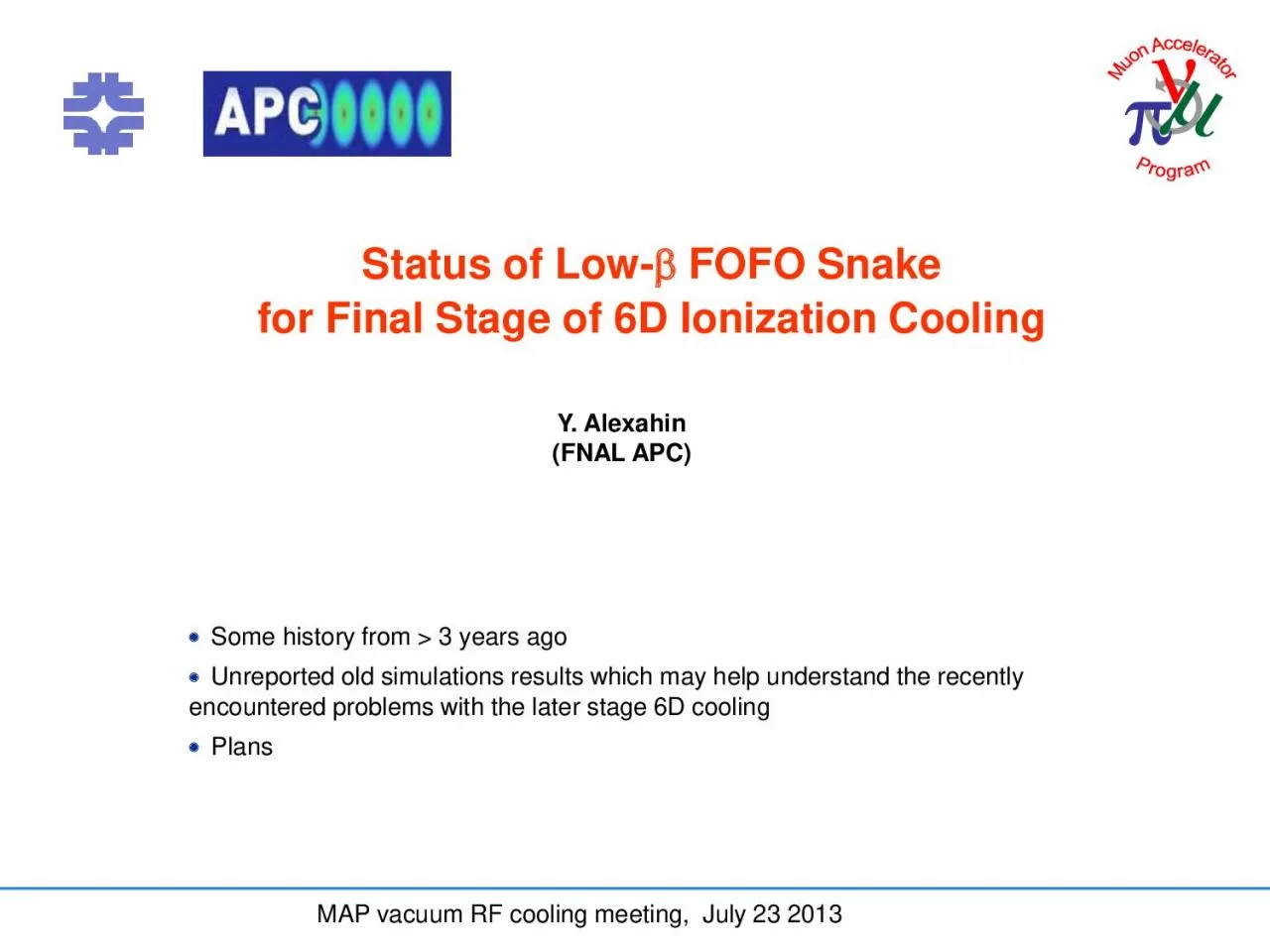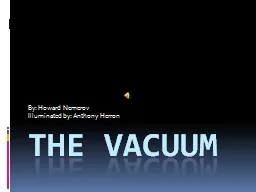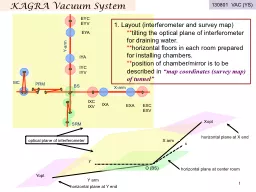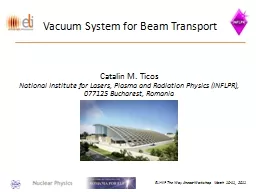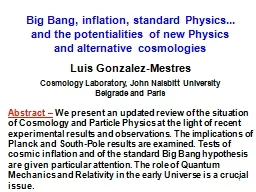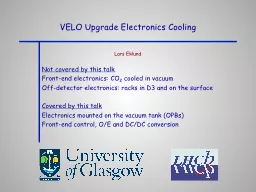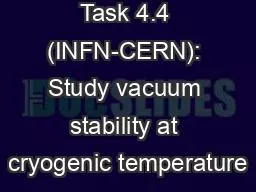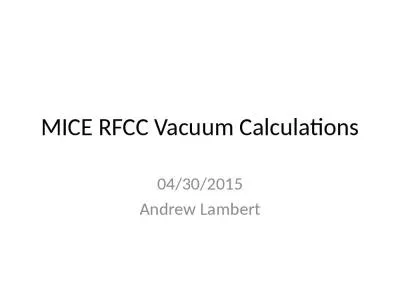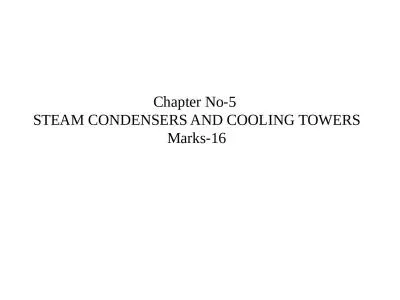PDF-MAP vacuum RF cooling meeting July 23 2013
Author : valerie | Published Date : 2021-09-14
Y AlexahinFNAL APCStatus of LowFOFO Snakefor Final Stage of 6D Ionization CoolingSome history from x0000 3 years agoUnreported old simulations results which may
Presentation Embed Code
Download Presentation
Download Presentation The PPT/PDF document "MAP vacuum RF cooling meeting July 23 2..." is the property of its rightful owner. Permission is granted to download and print the materials on this website for personal, non-commercial use only, and to display it on your personal computer provided you do not modify the materials and that you retain all copyright notices contained in the materials. By downloading content from our website, you accept the terms of this agreement.
MAP vacuum RF cooling meeting July 23 2013: Transcript
Download Rules Of Document
"MAP vacuum RF cooling meeting July 23 2013"The content belongs to its owner. You may download and print it for personal use, without modification, and keep all copyright notices. By downloading, you agree to these terms.
Related Documents

